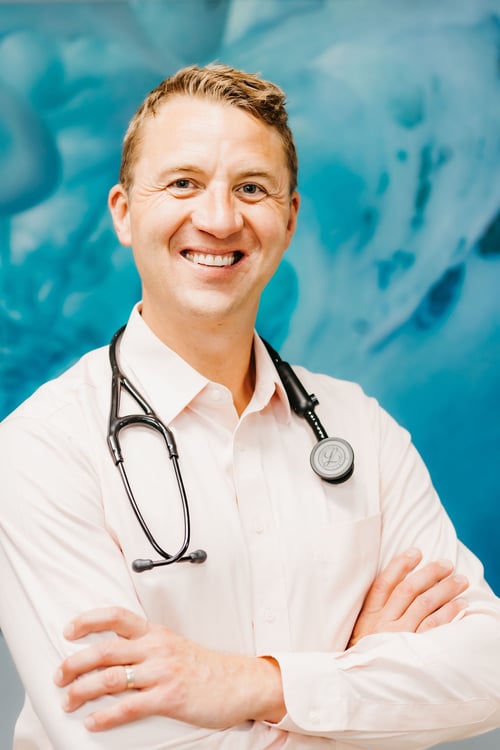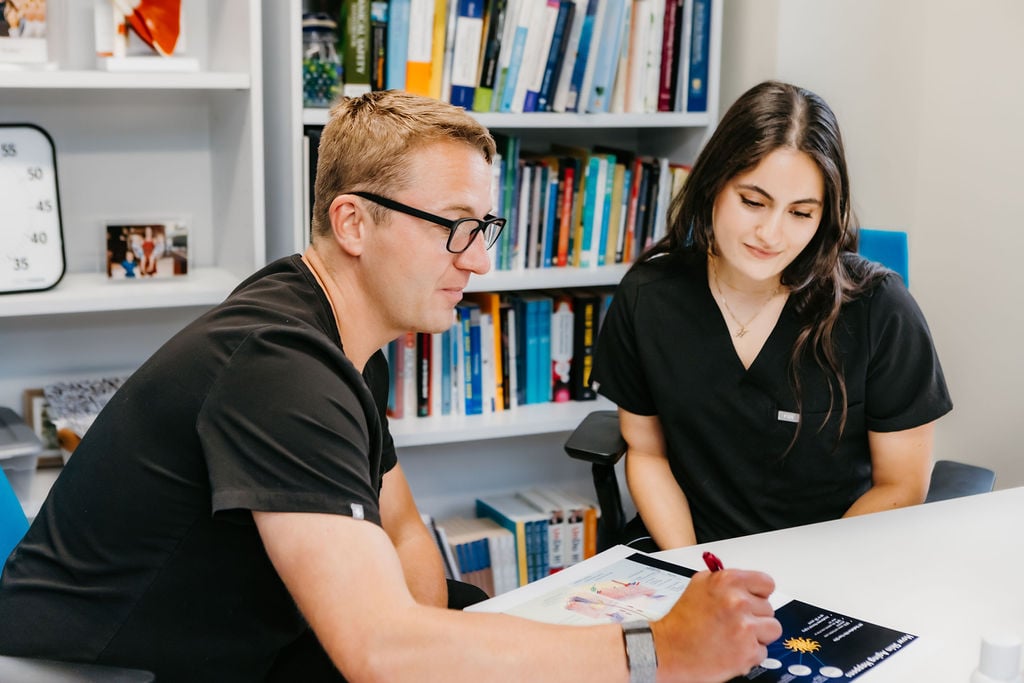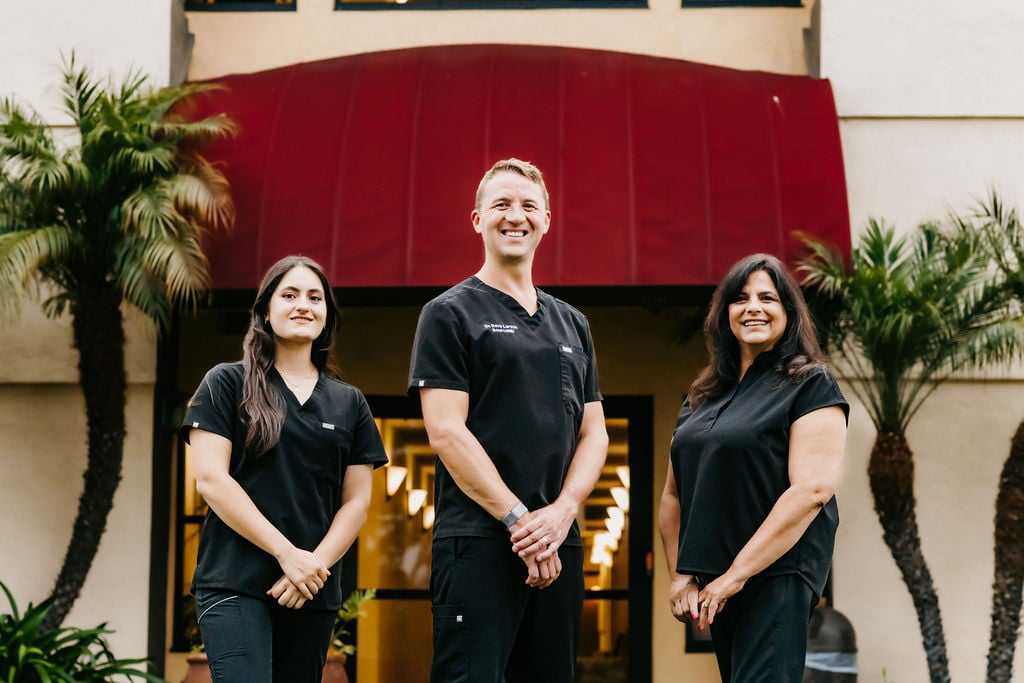An early experience of awakening helped a young David Larson realize that there is life beyond what the eyes can see. In 8th grade, David received an invitation to have breakfast with the Dalai Lama thanks to David’s uncle who had become interested in Tibetan Buddhism and successfully sold a family business. This intimate setting of breakfast with the Dalai Lama was life changing for David who experienced an incredible sense of internal bliss and love, which resulted in a sudden flow of tears before the Dalai Lama even entered the room. David described the rest of his experience at the breakfast as a sort of blackout of bliss. He recognized the holiness and love from this man, the Dalai Lama and from that point, had a continuous curiosity of Buddhism and personal development. He learned that “there are states of consciousness or states of being available to us” that improve the quality of our life experience.
This seeking of a higher state of being and quality of life infused the lens through which David pursued his career in medicine. And it was likely also the reason why David did not take the linear path to medical school, but instead explored other possible careers before committing to the pursuit of a medical degree. After earning his Bachelor’s Degree in Business Administration and taking the minimum required pre-med course load from Brown University, David spent time in Spain on a Fulbright Fellowship in consideration of a career path in public health. He also had the opportunity to spend a year in rural India supporting the marketing and fundraising efforts of a hospital that had implemented a successful village health worker program.
Ultimately, David did decide to go to medical school and pursued his degree at the University of Southern California, where he got burned out fairly quickly attempting to follow the “book” of attending all classes and covering all assignments, which added up to a daily workload of 17 hours, which was not sustainable for him. He took a step back to consider that there has to be a better way and opted to interview 3rd and 4th year medical students who seemed to be enjoying the program, had a balanced life, and also did well in their classes to see how they managed their time.
David quickly discovered that he could be selective about which classes to attend and learned how to leverage study guides and make use of flashcards. This new approach enabled David to engage in the self-care activities he needed and perform much better academically. Thanks to this strategy, David graduated at the top of his class and became a role model for other med students, even writing a book, Medical School 2.0: An Unconventional Guide to Learn Faster, Ace the USMLE, and Get Into Your Top Choice Residency to help med students avoid burnout and succeed with his proven method. A year after releasing his book, David was invited to speak as part of Lifehacks at TED 2016.
As the time approached for David to select a specialty, he reflected on dermatology, psychiatry and family medicine. His peers encouraged him to pursue dermatology because of his high grades and thus likelihood for acceptance, but psychiatry interested David far more, followed by family medicine. To get a better grasp of each field, David listened to the audio of medical conferences from each specialty. Finally, David Larson, MD decided to go to his top choice, University of California San Diego (UCSD) Psychiatry for his residency.

At residency, Dr. David Larson soon saw that the focus of care was on administering medication to the “sickest of sick” in order to get them to simply operate at a base level. Dr. Larson felt that the residency training missed the full spectrum of psychiatry and a large aspect of what he was most passionate about, which includes “helping people thrive mentally and emotionally, helping people cure and recover from trauma, [and] helping people realize the power of their own conscious choice to transform their lives.”
Fortunately, it was during this moment of realizing that the specialty track of psychiatry was not going to fulfill Dr. Larson’s aspirations, that he learned, UCSD had a double family medicine and psychiatry track. Thus, Dr. Larson asked to switch and luckily for him as there were only two available slots in the program, a young woman who was in that program was leaving to go to the psychiatry track, which permitted him to pursue it.
According to the American Medical Association, there are currently only six programs in the country that offer a double residency training program in the fields of psychiatry and family medicine, some of which include the University of Pittsburgh, University of California Davis, Boston University, and the University of California San Diego. At UCSD, the program is five years and consists of six months of training in psychiatry and family medicine respectively each year.
Although the dual residency program was a better fit for Dr. Larson’s career ambitions, he still didn’t see doctors practicing medicine in a way that was aligned with his vision of how medicine should be practiced. While keeping this vision in mind, Dr. Larson continued self-study on holistic health and functional/integrative medicine. He went to conferences and found mentors focused on functional/integrative medicine. During his last year of residency, Dr. Larson began a rotation at a private concierge medicine practice where he ultimately secured full-time employment post-residency and around the same time, he discovered direct primary care (DPC) at the American Academy of Family Physicians (AAFP) Family Medicine conference.
The seeds of direct primary care continued to grow in Dr. Larson’s mind and after a year and a half of working for someone else, he felt the urge to venture on his own. Dr. Larson enjoyed his patients at the concierge medicine practice that he worked for, but the commute was a drag and he was limited in terms of creativity. Besides, he had a vision for the way medicine should be practiced and had developed himself both through formal training and education as well as independent research and self exploration to make this vision a reality.
The only thing needed was an avenue to put this holistic approach into practice and after getting introduced to DPC at the AAFP Family Medicine Conference and learning even more at Hint Summit 2017, Dr. Larson knew that opening his own practice - a direct primary care (DPC) style concierge clinic, would be the best avenue. So Dr. Larson took a leap of faith and opened SourceMD: Integrated Wellness Solutions just a few blocks from his home in 2019 beginning with a combination of fee-for-service cash pay and membership followed by a full transition to membership plans only, one year later.
Dr. Larson describes health as a spectrum from zero - the sickest someone would be before they die to 100 - the best someone could possibly feel and function and he suggests that most Americans are somewhere between twenty and thirty, where they are “not bad enough to go to the ER, but definitely not thriving and probably have a handful of chronic diseases that they’re not aware of that are brewing.” Most medical training is focused on the zero to ten part of that scale with emergency medicine, ICU training, etc. to bring patients back to twenty and send them off to “be healthy.”
There are quite a number of gaps in the medical education system. For example in medical school, students learn about interventions for diabetes, but the fact is, diet is the best tool to lower A1C, yet medical schools allocate an insignificant amount of time on nutrition education. And for the things that the medical education system does get right, it takes 26 years for studies in medicine to come into practice. Clearly, there is a better way, but it will depend on the agency of independent physicians and namely DPC doctors who have the time and flexibility to incorporate holistic practices, innovation and creativity into the way they deliver care to patients.

“DPC is really the only way I could weave all of my passions and all of my different training experiences together.” - David Larson, MD
By owning a direct primary care style concierge practice, Dr. Larson can leverage his double-certified status as a family physician and psychiatrist in a unique way to offer optimal care to his patients. Dr. Larson describes his patients as people who don’t like taking prescription medications or would like to get off prescription medications. Some of the healing modalities that Dr. Larson incorporates in his care include biofeedback, breath work, meditation, as well as helping patients to improve social and spiritual connections. He teaches his patients “how to activate their parasympathetic nervous system and track their heart rate variability.” Dr. Larson also brings in patients’ families to educate them and at the right time introduces psychotherapy to patients.
An annual exam with Dr. David Larson is not your typical physical, the appointment takes about 4 hours and Dr. Larson spends an additional couple of hours writing a detailed, personalized health brief that includes a course guide for patients to level up their health. Dr. Larson meets patients where they are at and empowers them to take charge of their health with preventative and restorative lifestyle and integrative medicine approaches.
David Larson, MD examines patients’ biomarkers, evaluating how their metabolome and proteome interact with their lifestyle choices and environment and how all of it is affecting the health of their blood vessels and major organ systems. Dr. Larson recounts that most of his patients come in at about 30 to 45 on his health scale of zero to 100 and he helps them get to 80-95 or sometimes 100.

“I look upstream from what we can do from a foundational aspect, not to just put a bandaid on a symptom, but to reverse the causes of disease and simultaneously, what we can do to focus on helping to create a life really worth living, where you’re feeling vibrantly alive, engaged, meaningful, and purposeful.” - David Larson, MD
Dr. Larson charges a premium for his membership plans, offering a sliding scale, so that patients who can afford it pay more, permitting him to offer subsidized plans for those who are unable to afford standard rates. And this approach has worked well for Dr. Larson who has had a completely full patient panel and consistent waitlist since 2021. SourceMD’s staff consists of Dr. Larson, a manager and a medical assistant. Dr. Larson’s practice is living proof that with DPC, you can be the physician that you always wanted to be and enrich lives while doing it.
To learn more about how to get started in direct primary care, get a sneak peak of the DPC Playbook.

